Marble Flooring; What You Need to Know Before Getting It?
Work-tops.com
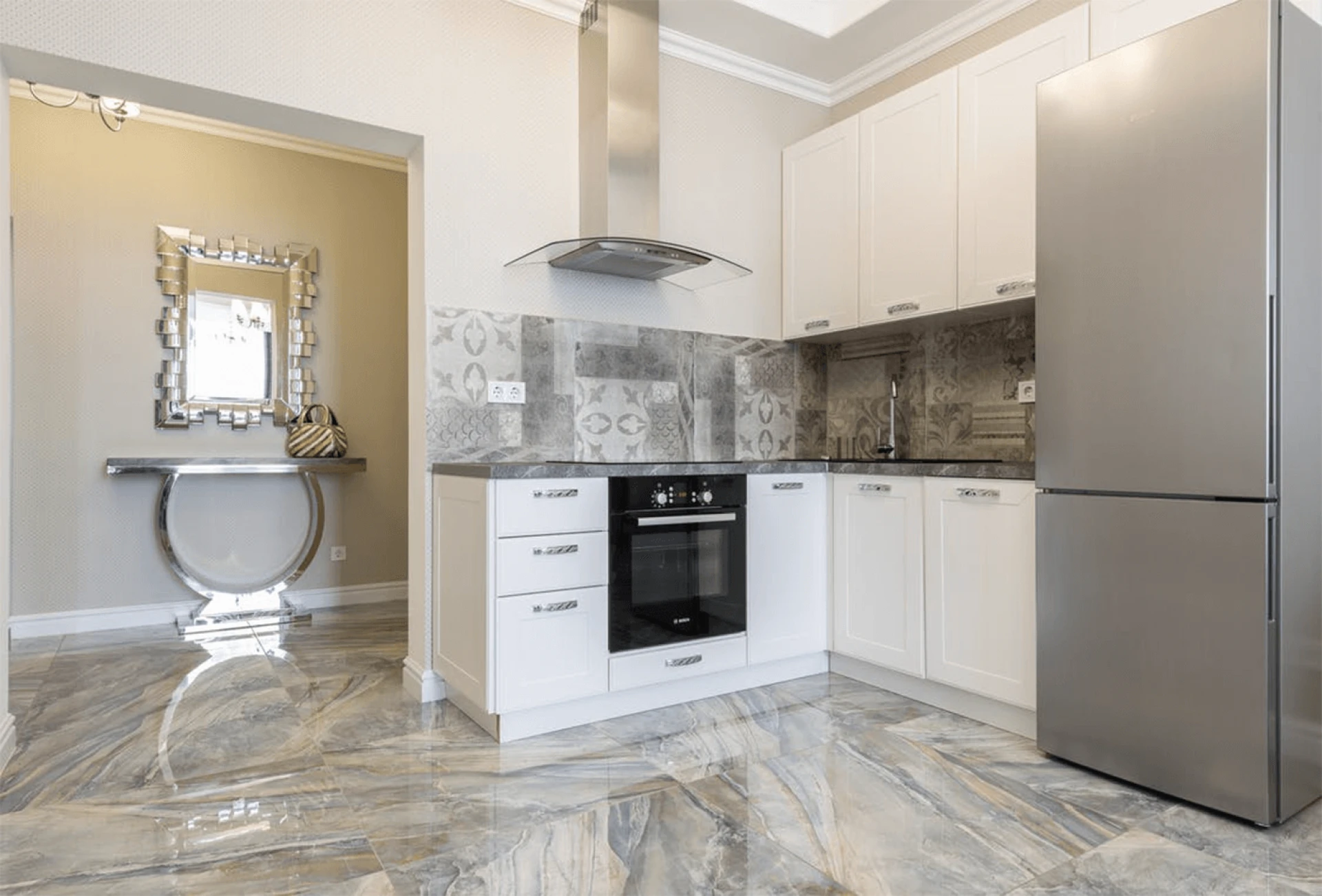
Marble flooring has long been the material of choice in custom houses and structures due to its natural elegance and luxury appeal. Marble may be found across Europe\'s historic homes and monuments. Even in the twenty-first century, when there are more flooring options than ever before, marble rules supreme as the king of high-end flooring.
Although most people are familiar with marble as a material, many are unaware of what it is or how it can be utilised to create unique, stunning custom floors.
Marble For Flooring Design Ideas:
Marble is a very flexible stone that may be used to create custom designs and patterns. The design possibilities are endless. However, if you prefer traditional designs, the following are some of the most popular marble floor patterns.
Herringbone Design
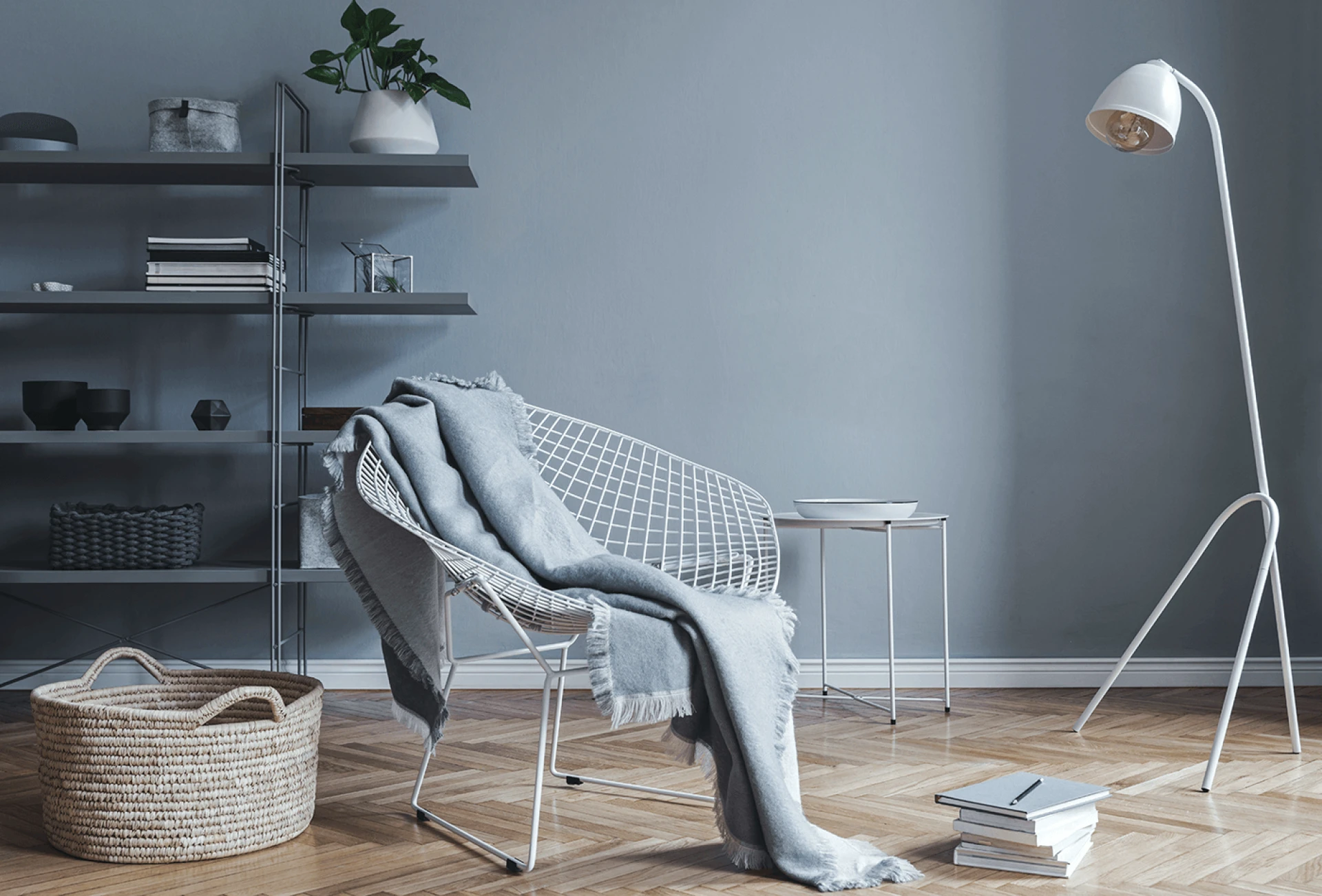
A gorgeous pattern that looks stunning in a modern kitchen. It is constructed using rectangular tiles. Variations to this design can be made by combining different shades in alternate rows or a striking blend of dark and light tiles.
Brick Pattern

A brick or subway pattern is an excellent choice for a patio or outdoor kitchen floor.
Regular Pattern
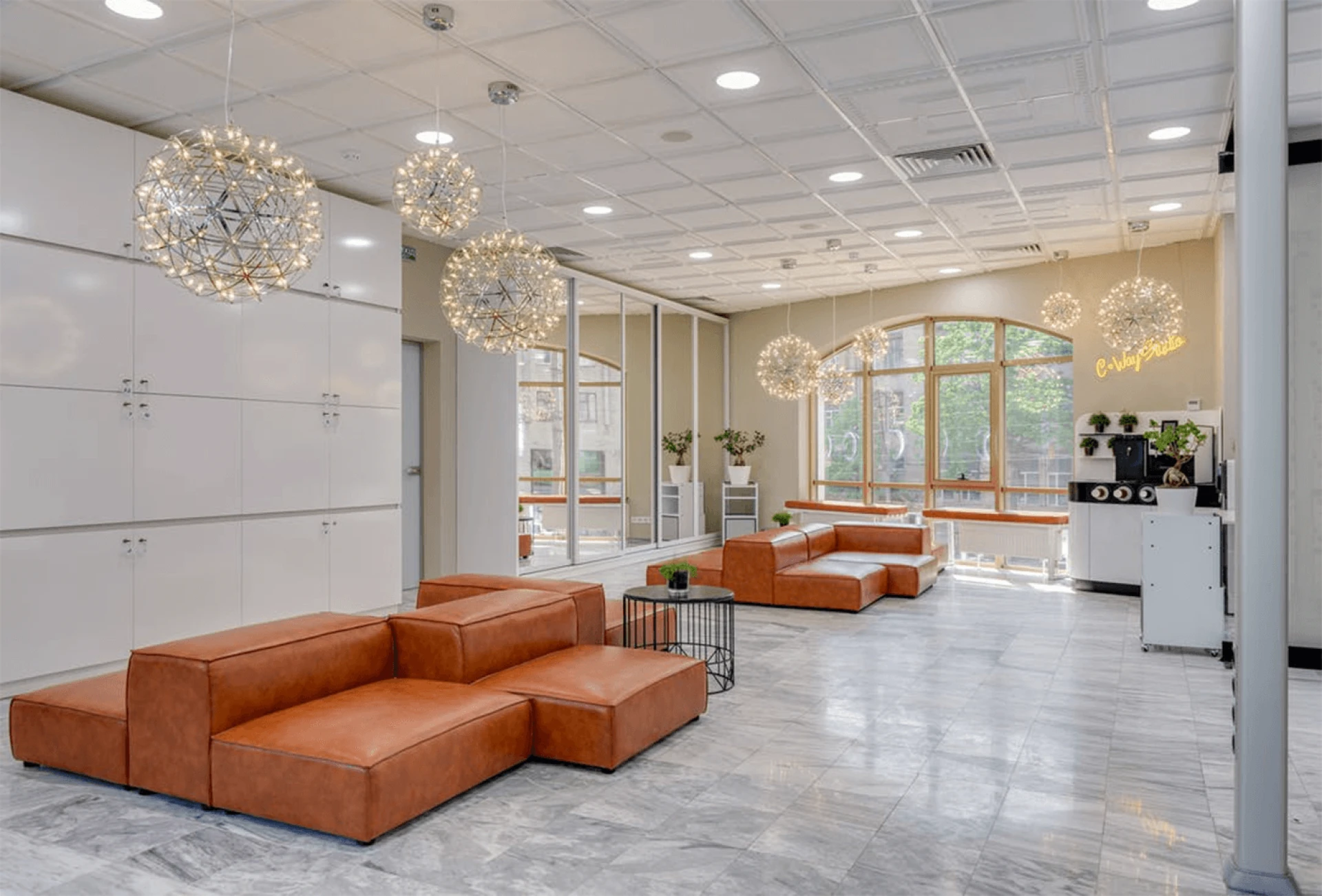
A regular pattern is one in which large-sized tiles are set out horizontally. This design is ideal for kitchens or rooms that need to look spacious and breezy.
Repeating Pattern
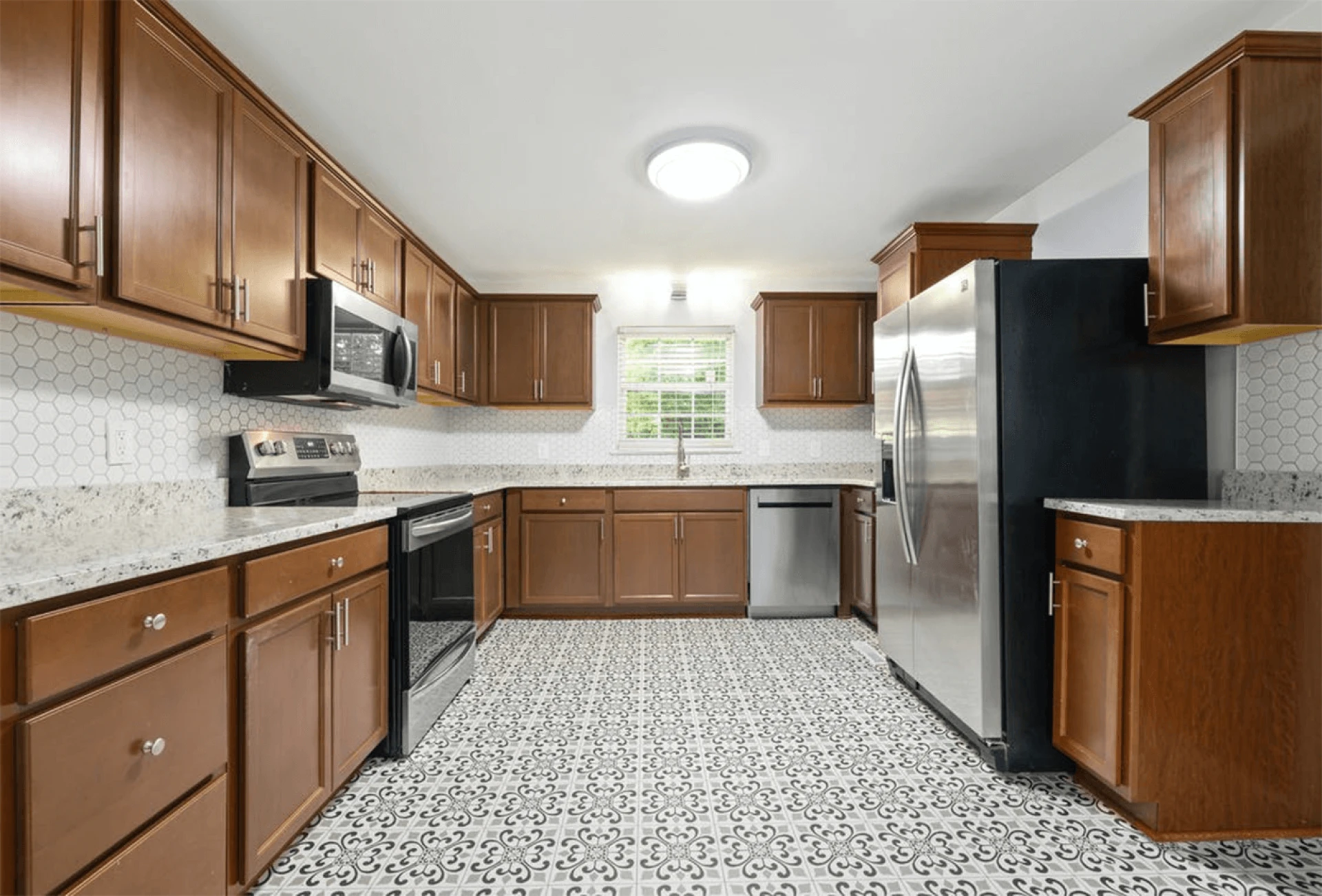
A repeating pattern can create a basic uneven floor or a spectacular design that complements the furnishings and artwork in the room. Repeating patterns can include beautiful colour choices.
Bordered Floors
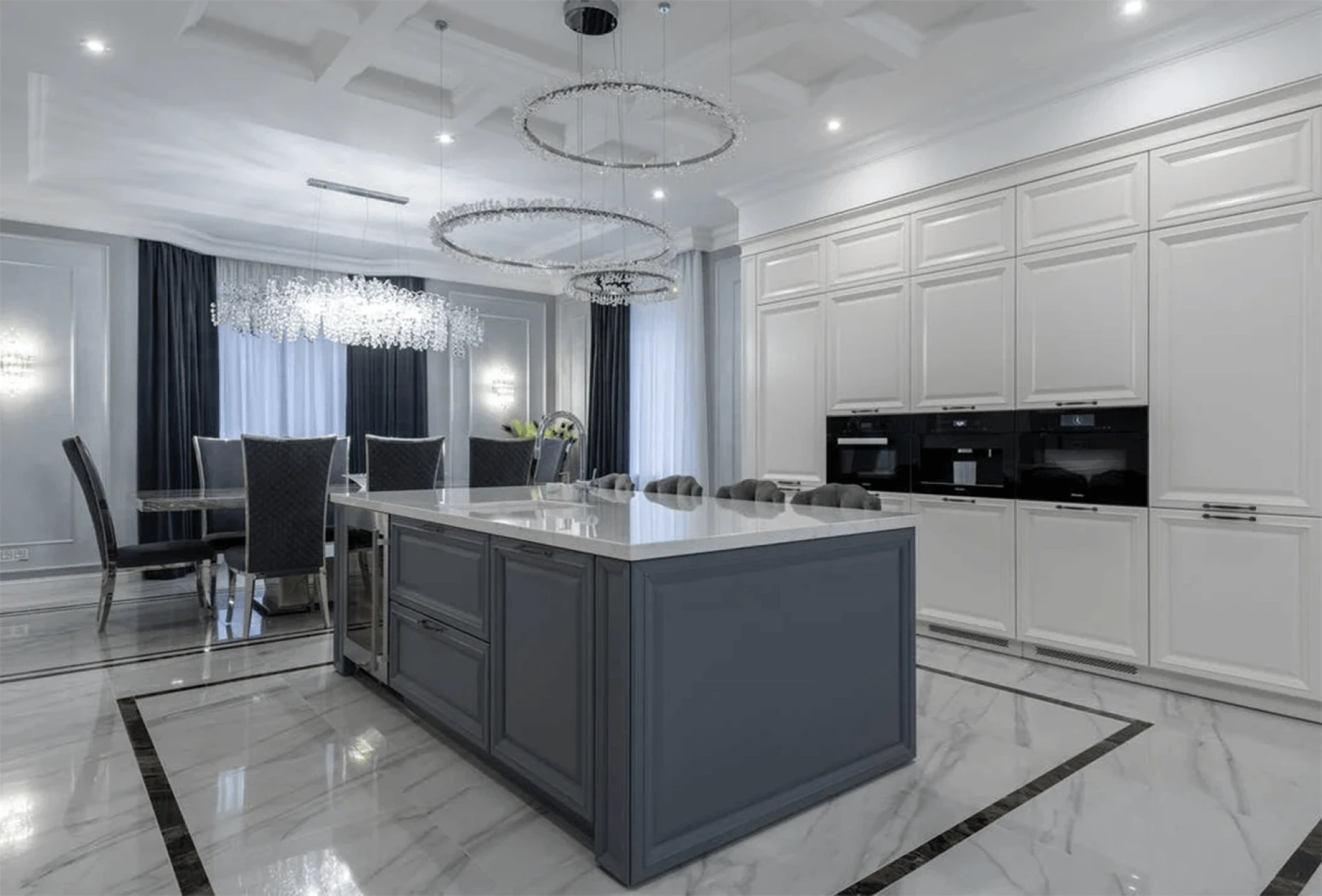
A bordered floor is an ancient classic marble floor pattern. The border is a different colour or shade that can either cover the entire space or be in the middle of the room, covering a tiny part. To make the border more noticeable, several sizes or shapes might be used. Hallways and entryways can be defined by using a dark-coloured marble tile as a border.
Benefit of Marble Flooring:
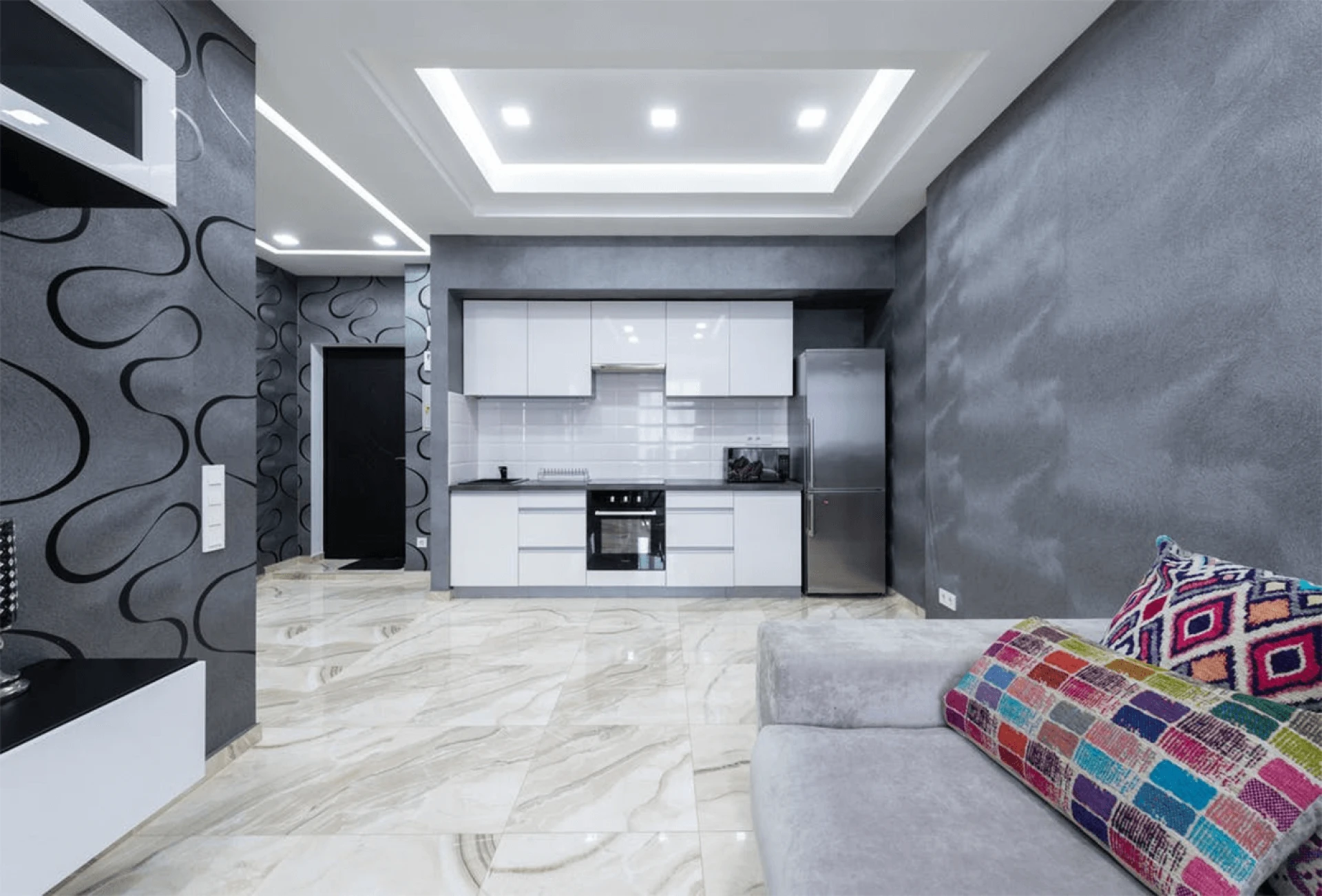
For thousands of years, marble flooring has been used. Its ageless nature says volumes about its quality. However, there are several advantages to marble flooring to consider.
Natural Beauty
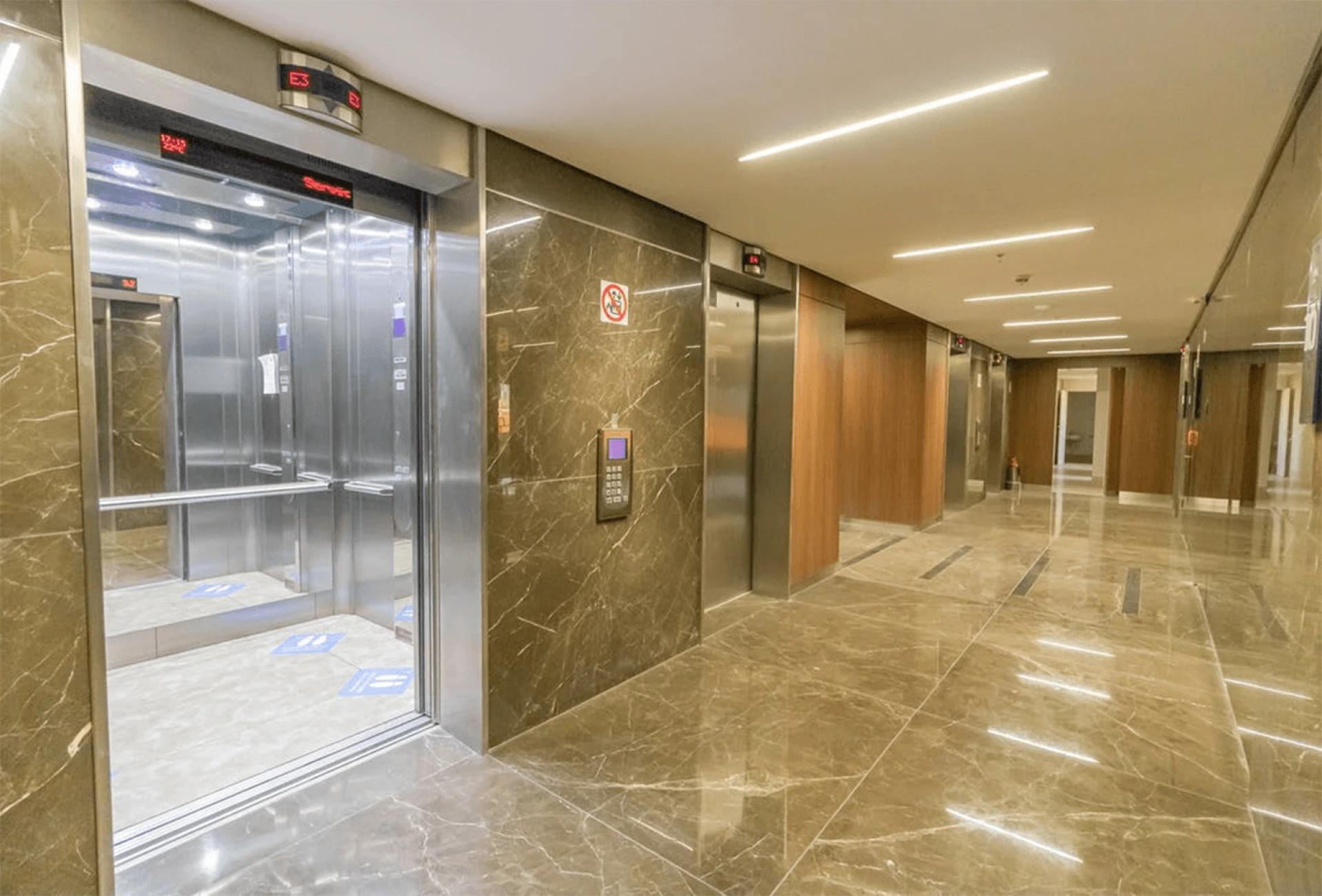
Marble is a high-end finish that is used to give areas a beautiful, rich appearance. However, it also gives any area a plain, natural appearance. Because marble is not man-made, the patterns in each tile or slab change slightly, creating a unique aesthetic each time. When you combine that aesthetic with a one-of-a-kind installation and design, you have a floor that will take your room to the next level.
Cleaning is Simple

Marble floors are resistant to liquids and other chemicals as long as the seal is properly maintained. There\'s no need to be concerned as long as you clean up spills as soon as they happen. When marble gets wet or dirty, it may be easily cleaned with a rag or mop. Marble, depending on the colour you choose, also makes it easier to see dirt or pet dander, making it easier to fully clean up mistakes before they harm the floor or cause further problems.
Many Colours to Choose From
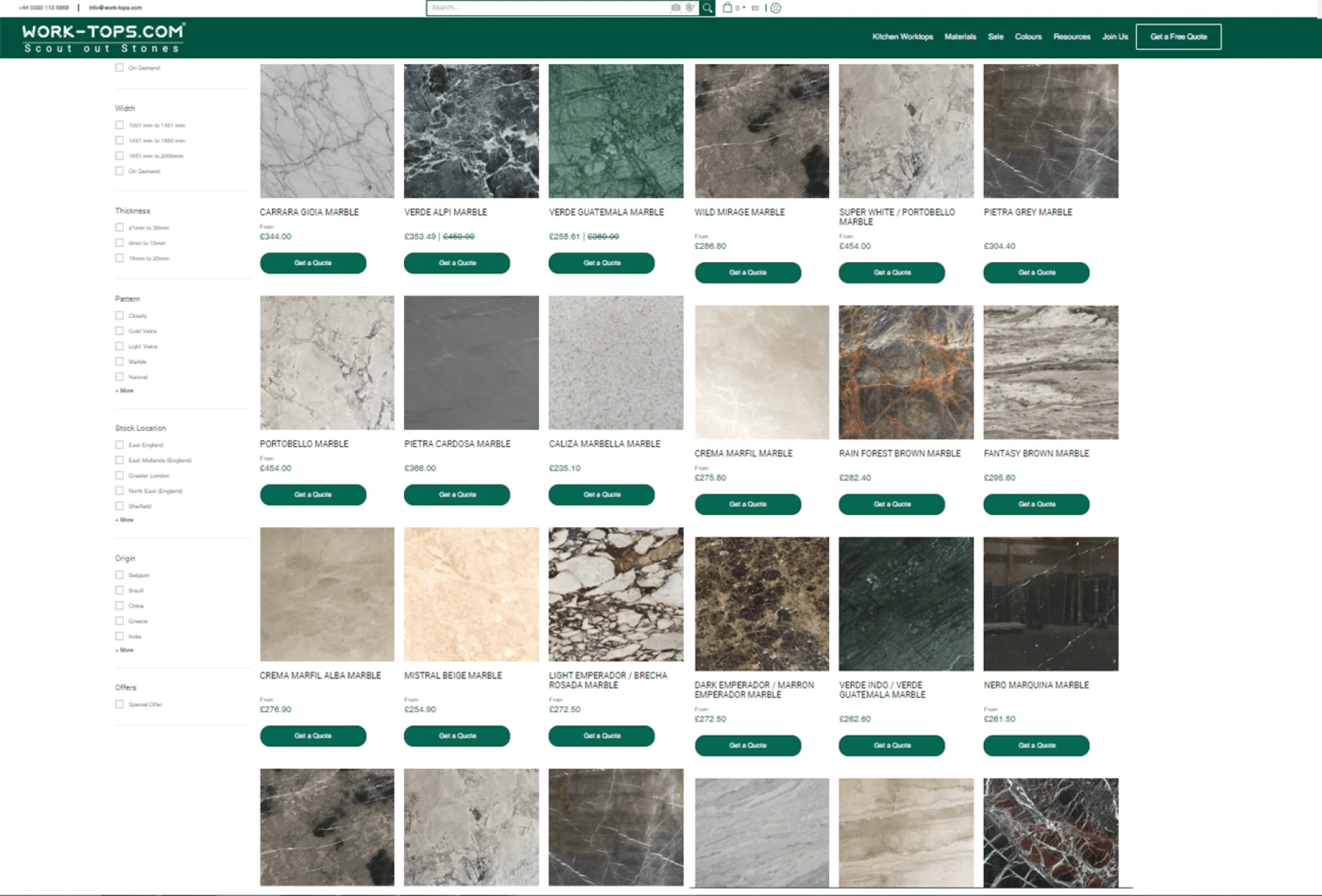
When it comes to the benefits of marble flooring, "natural" does not limit your alternatives. Marble flooring is available in a variety of colours and designs. Some homeowners choose marble flooring to complement other elements in their homes. Others choose their preferred flooring and then design the rest of the room around it. There are lots of options available to you regardless of the path you choose.
Durable
Marble flooring is both durable and attractive. Marble floors can withstand almost anything you can throw at them. Are the dining room chairs rubbing against them? Dishes left in the kitchen? Is there water splashing all over the bathtub? Marble is up to the task. Marble flooring is scratch-resistant and durable as long as it is properly maintained, especially in high-traffic areas of your home.
Eco-Friendly
Marble flooring is also environmentally friendly. Because it is a natural material, it is not built or processed with chemicals. It is biodegradable at the end of its life.
Know this Before you Buy Marble for Floor:
Marble flooring is a fantastic choice for a range of home or office areas. However, there are several essential things to keep in mind while considering the pros and cons of marble flooring.
"Moisture Resistant" Does Not Indicate Stain Resistance
One quality we appreciate about marble flooring is its resistance to moisture. This makes it simple to clean up spills and messes as they occur. However, because marble surfaces can stain, you should never leave food or beverages on them for an extended period of time. Acidic foods and beverages, such as red wine and citrus, can be especially hazardous if allowed to come into contact with marble surfaces for an extended period of time.
Maintenance is Essential
Marble flooring is a low-maintenance option. It is simple to clean and does not absorb substances that are spilled on it. However, in order to keep these desired features, you must reseal marble when it is first installed and again once a year to maintain the protective barrier.
You May Need to Buy New Dishes
Marble is extremely hard, making it an excellent choice for long-lasting flooring that can withstand foot traffic, spills, and whatever else you throw at it. The disadvantage is that glasses and dishes will shatter if dropped on a marble floor.
When Wet, Slippery

When wet, marble\'s smooth, highly polished surface becomes extremely slippery. This can lead to dangerous situations, especially if you install it in a bathroom or entryway where it will be exposed to water on a regular basis.
Cons of Marble Flooring:
Easily Scratchable
If not properly maintained, marble floor tiles are easily damaged. Scratches might cause damage to them. Even light scratching and cracking can severely damage the surface. These flaws become more visible when polished.
Softness
Marble, like all other stones, is both hard and soft. Even its solid crystalline structure can be chipped or broken with time, so have your marble tiles sealed immediately after installation.
Sealants
Natural stones have pores and holes that can be penetrated by water and other liquids if they are not sealed. Sealers protect the surface of the marble tile and help it retain its natural colour. Marble floor tiles should be resealed annually for the best results.
Non-Stain Resistant
Marble is a metaphor for carbonate minerals, which are common in nature. Marble tiles react severely when exposed to acidic chemicals due to their basic intrinsic character. These interactions cause staining and etching of tile, resulting in permanent discoloration. Spills of wine, coffee, orange juice, or even ketchup should be cleaned up right away to avoid further damage.
Marble Flooring Finishes
Marble tile can be made in a variety of surface styles. Polished, honed, tumbled, and brushed marble finishes are the most common.
Polished
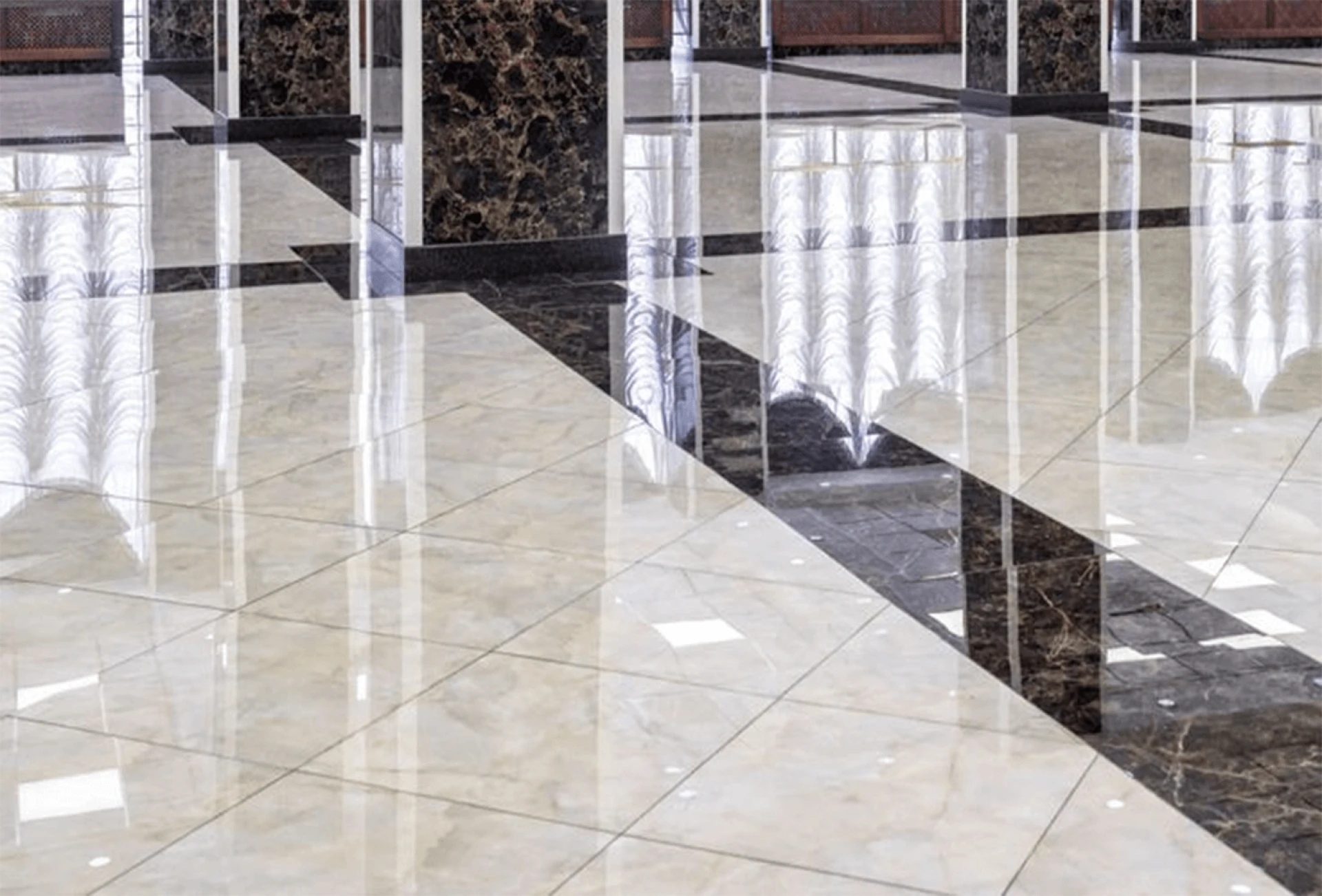
A marble floor\'s capacity to take a high polish is one of its most prized properties. This enables the material to be polished until it shines brightly in the light and is completely smooth to the touch.
Honed
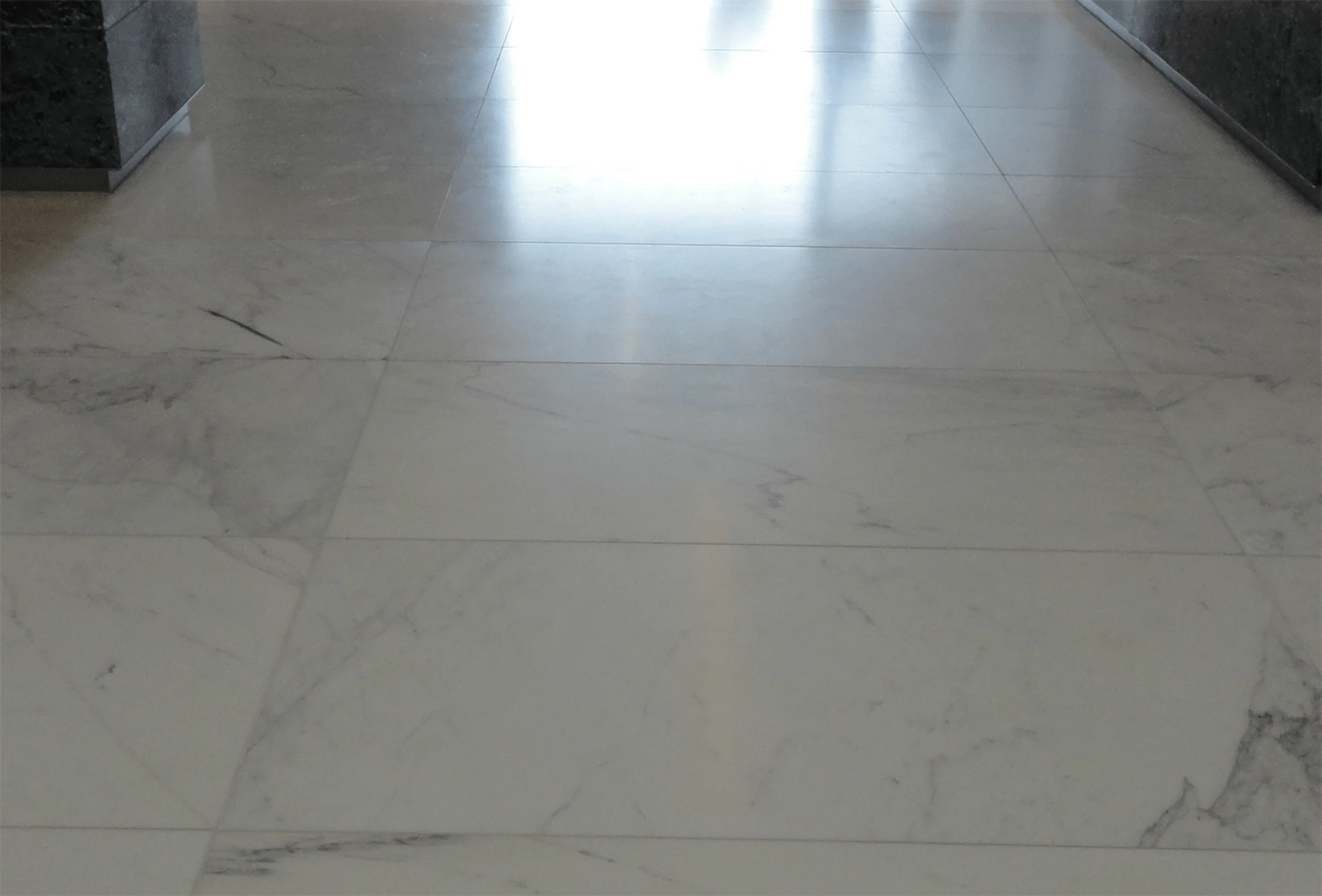
A honed surface is made by grinding down the marble until it is flat and smooth, but not so much that it is slippery and shiny. These tiles provide the elegance of marble while reducing the risk of slipping.
Tumbled
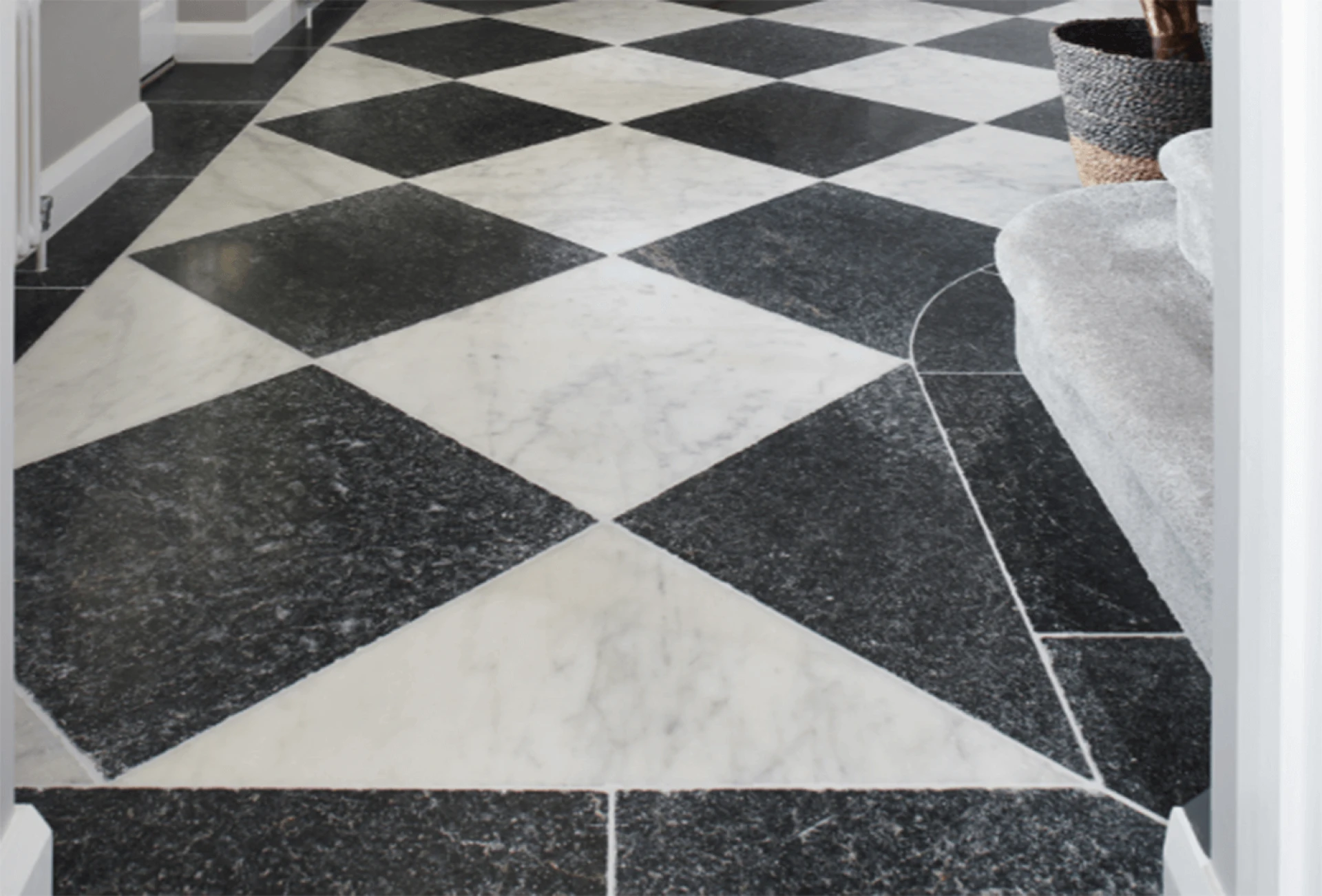
Tumbled marble is made by processing tiles in a drum with rock and sand aggregate, which results in small chips, scratches, and rounded edges. The finished tiles have a rustic, natural appearance. The tumbled marble texture is great for shower floors since the polish reduces the chance of slipping.
Brushed
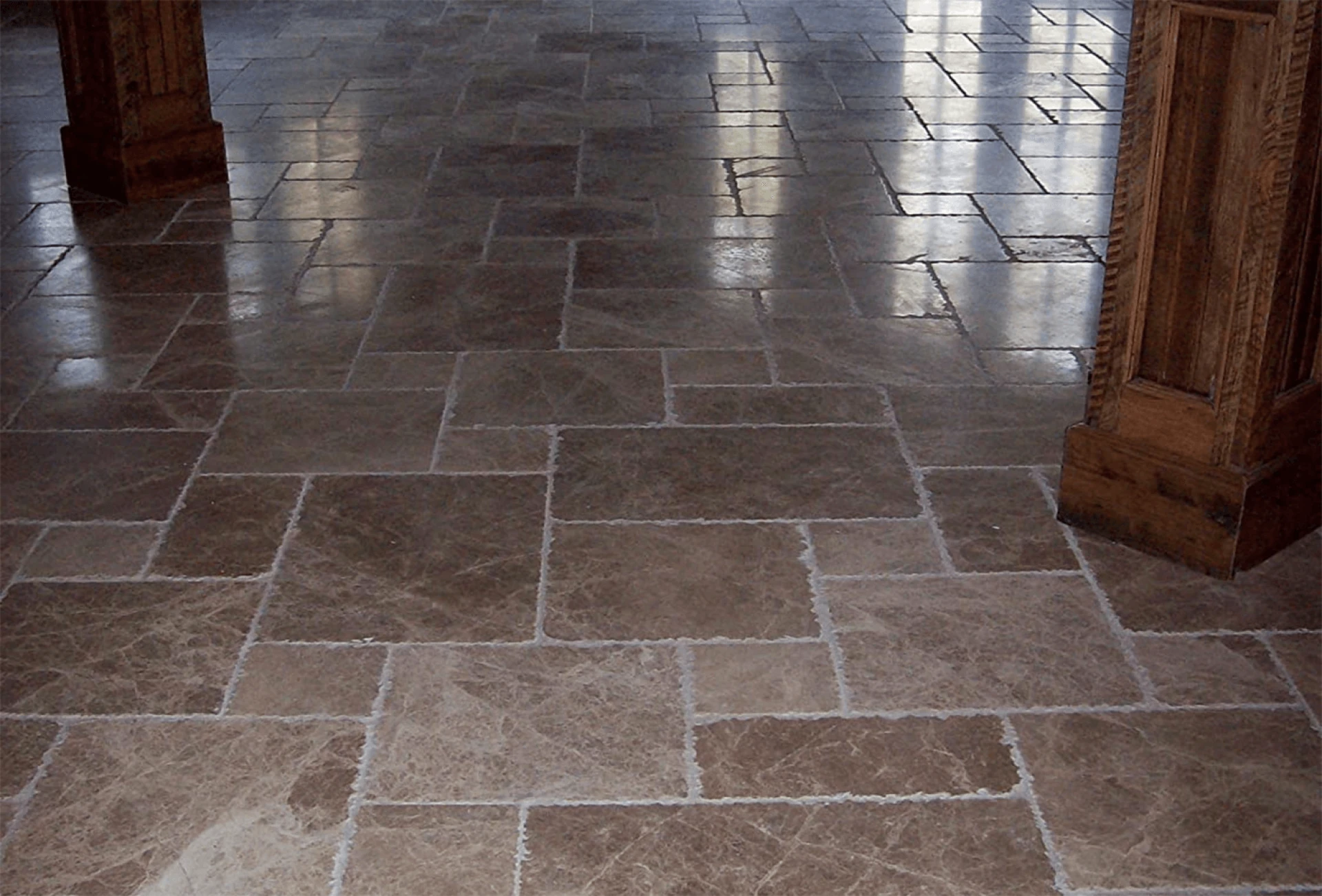
Brushed marble is made by scratching the surface of the tile with particles until it has a natural antique appearance. The brushing process, on the other hand, provides a rather porous surface that must be sealed often in order to resist stains.


